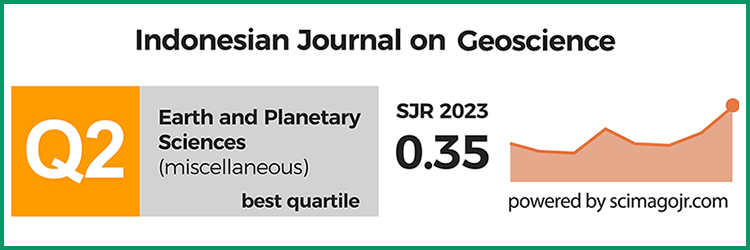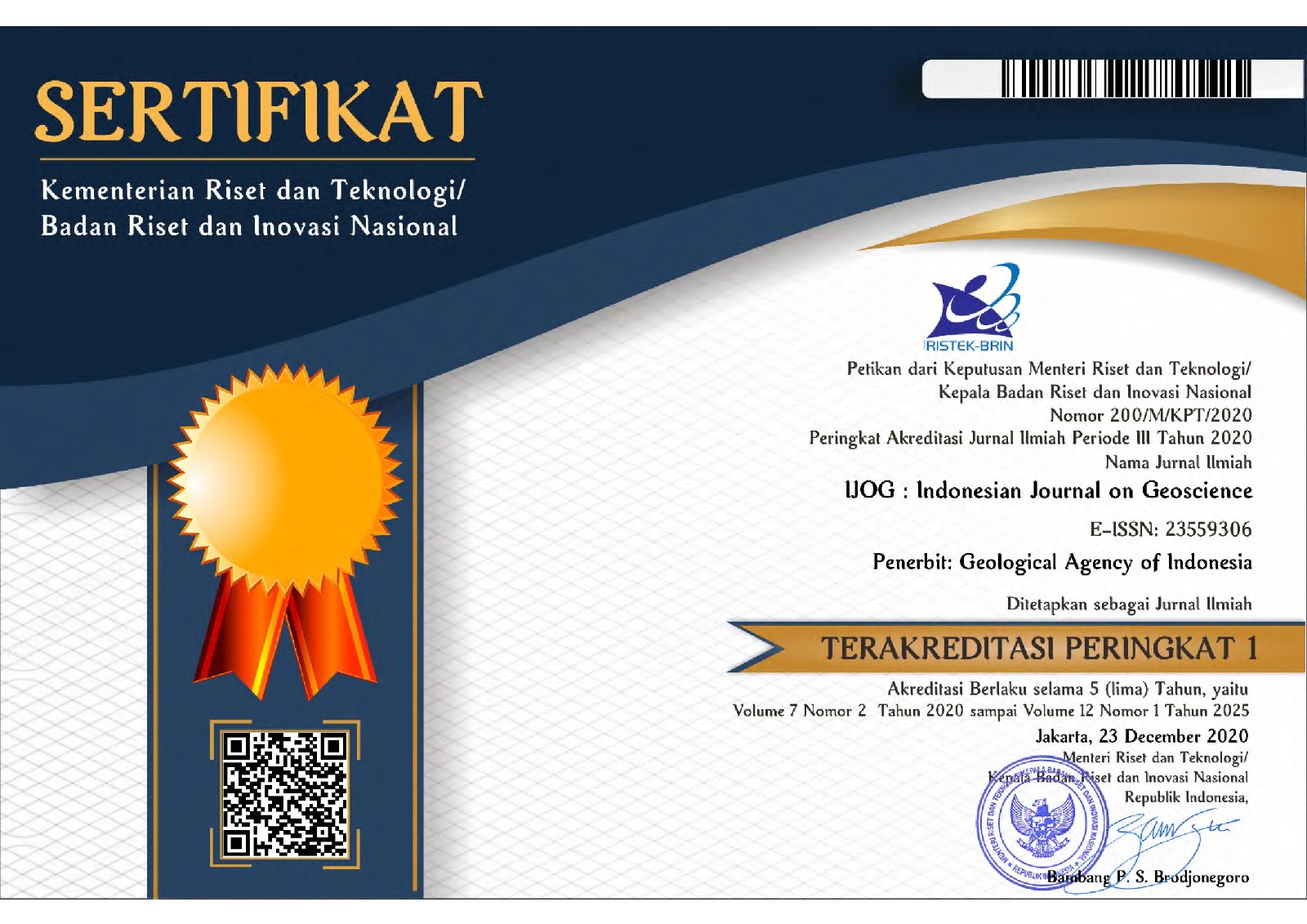Physical Disintegration Characterization of Mudrocks Subjected to Slaking Exposure and Immersion Tests
DOI:
https://doi.org/10.17014/ijog.5.4.219-225Keywords:
disintegration, mudrock, exposure, immersion, slaking testAbstract
In order to gain insights into the detailed physical disintegration characteristics of various types of mudrock, a series of static slaking exposure and immersion tests were carefully carried out in this study. The intent of this paper is to exhaustively describe and discuss the results of the tests, including slaking mechanism, mode and rate/intensity. In general, it can be obviously identified that there are significant different susceptibilities of each mudrock tested to slake-disintegration. These differences can not only be identified from the results of slaking exposure test but also from slaking immersion test. It seems that there is also an agreement in both testing results, which show that the most resistant mudrock to slaking was Ikeshima shales, and was comparatively, followed by Ombilin siltstones, Tanjung Enim mudstones-claystones, and Subang claystones as the worst slaking characteristic. The detailed differences in fundamental characteristics of physical disintegration characteristics will further widely be discussed in this paper.
References
Blatt, H., 1982. Sedimentary Petrology. W. H. Freeman and Company, San Francisco, CA, 564 pp. DOI:10.1017/S0016756800027576
Brattli, B. and Broch, E., 1995. Stability problems in water tunnels caused by expandable minerals. Swelling pressure measurement and mineralogical analysis. Engineering Geology, 39, p.151-169. DOI:10.1016/0013-7952(95)00009-5
Ferm, J. C., Weisenfluh, G. A., and Smith, G. C., 2002. A method for development of a system of identification for Appalachian coal-bearing rocks. Coal Geology, 49, p.93-104. DOI:10.1016/S0166-5162(01)00072-6
Hillier, S. 2000. Accurate quantitative analysis of clay and other minerals in Sandstone by XRD: Comparison of a Rietveld and a reference intensity ratio (RIR) method and the important of sample preparation. Clay Minerals, 35, p.291-302. DOI:10.1180/000985500546666
Hopkins, T. C. and Deen, R. C., 1984. Identification of shales. Geotechnical Testing Journal, 7, (1), p.10-18. DOI:10.1520/GTJ10479J
Irsyam, M., Tami, D., Sadisun, I. A., Karyasuparta, S., and Tatang, A. H., 1999. Solving landslide problem in shale cut slope in the construction of the valve chamber of the Tulis Hydroelectric Power. Proceedings '99 Japan-Korean Joint Symposium on Rock Engineering, Fukuoka, Japan, p. 217 - 224.
Madsen, F. T., 1979. Determination of the swelling pressure of claystone and mudstone using mineralogical data. Proceedings 4th International ISRM Congress, Montreux, 1, p.237-243.
More, D. M. and Reynolds, JR. R. C., 1997. X-Ray Diffraction and the Identification and Analysis of Clay Minerals, 2nd ed., Oxford University Press, New York, 378 pp. DOI:10.1017/s0016756898501501
Sadisun, I. A., Shimada, H., Ichinose, M. and Matsui, K., 2004. Textural and mineralogical properties of argillaceous rocks in relation to their propensity to slaking. Proceedings 4th Asian Symposium on Engineering Geology and the Environment: Engineering Geology for Sustainable Development at Mountainous Areas, Geological Society of Hong Kong, p.167-172
Sadisun, I. A., Shimada, H., Ichinose, M. and Matsui, K., 2005. Durability characteristics of Subang claystone in relation to the generation of shallow landslides. Proceedings 3rd International Workshop on Earth Science and Technology, Fukuoka, Japan, p.125-132.
Taylor, R. K. and Spears, D. A., 1970. The breakdown of British coal measure rocks. International Journal of Rock Mechanics and Mineral Science, p.481-501. DOI:10.1016/0148-9062(70)90002-1



















